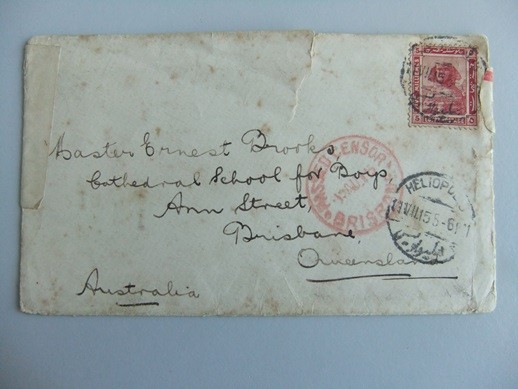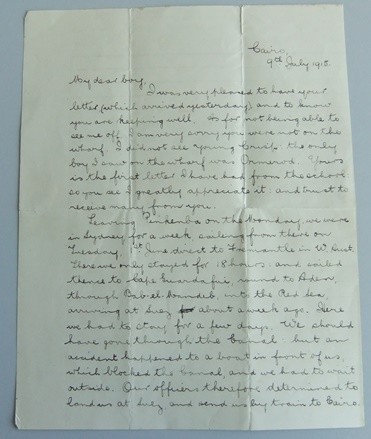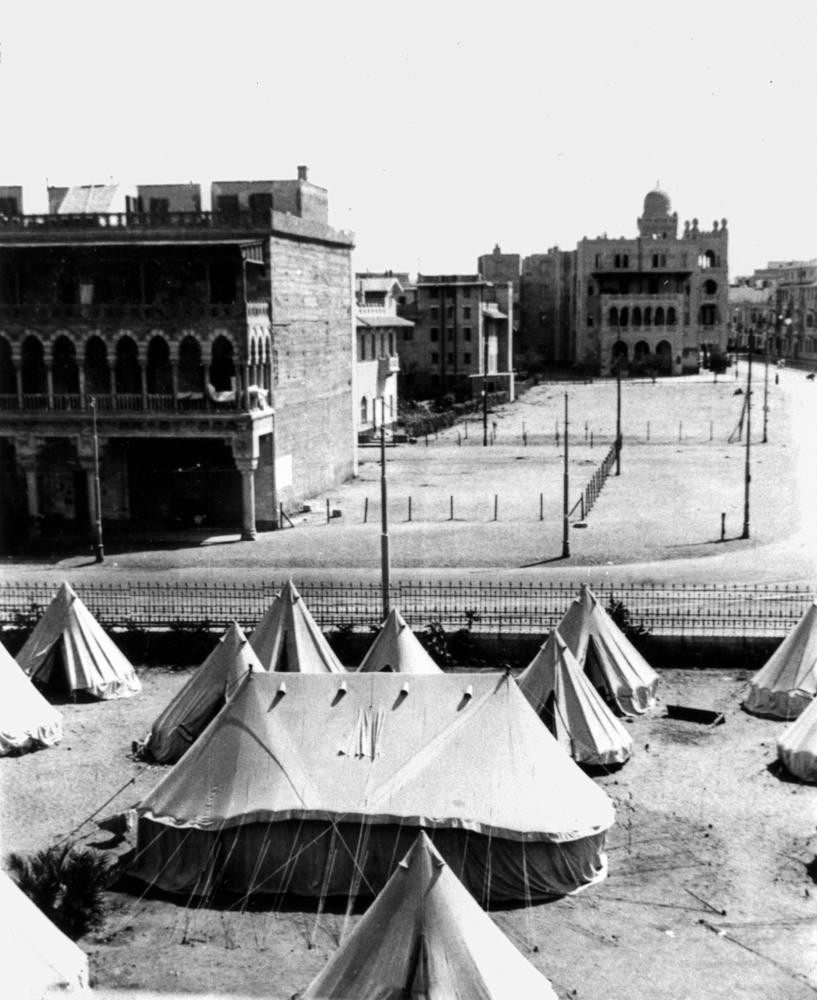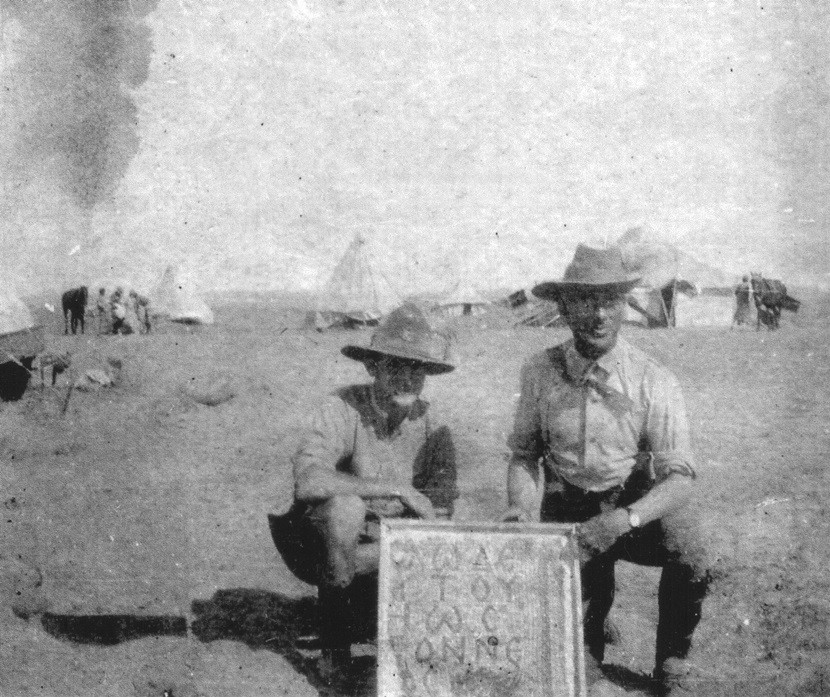Guest blogger: Glenda Murrell, Manager, Records and Archives Centre, Anglican Church Southern Queensland
Private John Neil was a teacher at the Cathedral School for Boys prior to his enlisting with the Australian forces. This school was the fore-runner to the Anglican Church Grammar School, East Brisbane. On 9th July 1915, Private Neil wrote a letter of reply to Master Ernest Brooks at the School. Ernest Brooks had evidently written to his former teacher apologising for not being at the wharf to see him off. John Neil responded the day after receiving Brooks’ letter, telling all about his journey from Pinkenba, Brisbane, via Sydney to Fremantle, and then to Egypt via the Suez Canal. He describes the daily routines of the soldiers and their training schedules.

The return address for this soldier is: 3523 Pte. J. Neil, A Section, 7th Field Ambulance, A.I.F., Abbassia Camp, Cairo, Egypt. So Neil was an ambulance bearer not a combatant.
He was killed on 4th October 1915 at Gallipoli. With the original letter is the small envelope in which it was posted. The Records & Archives Centre also holds two newspaper clippings relating to the death of Pte. Neil. Reading these documents in context is very moving. A young man, helping his fellow soldiers, was struck by a shrapnel shell while detailed to draw stores at Anzac.

Cairo
9th July 1915
My dear boy,
I was very pleased to have your letter (which arrived yesterday) and to know you are keeping well. As for not being able to see me off I am very sorry you were not on the wharf. I did not see young Crisp : the only boy I saw on the wharf was Ormerod. Yours is the first letter I have had from the school so you see I greatly appreciate it : and trust to receive many from you.
Leaving Penkemba on the Monday, we were in Sydney for a week sailing from there on Tuesday, Ist June direct to Fremantle in W. Aust. There we only stayed for 18 hours : and sailed thence to Cape Guardafui, round to Aden, through Bab-el-Mandeb, into the Red Sea, arriving at Suez about a week ago. There we had to stay for a few days. We should have gone through the Canal but an accident happened to a boat in front of us, which blocked the Canal, and we had to wait outside. Our officers therefore determined to land us at Suez, and send us by train to Cairo.
It is a run of eight hours from Suez to Cairo, we leaving at 6 o’clock Saturday morning arrived at Cairo at 2 o’clock Saturday morning. We left the train and marched to our camp at Abbassia. It would take so long to write all about the place. However, as we have sickness in camp, we are not allowed out of camp ; so my letter this time will be very short. I shall drop you a p.c. from time to time. It is very hot here. We are up at 4.30, go on parade at 5.30 and drill till 9 : then have breakfast : the rest of the morning is spent getting lectures, bandaging etc : dinner at 1 o’clock. Off till 4, drill from 4 to nearly 7, tea at 7. So you see we have long days : and tramping about in the sand, which is deeper than your ankles, is not easy work. That is why we do our drill in the mornings and afternoons, and none during mid-day – it would be too hot. You can look all round you, and see nothing but sand. The winds, too, are hot : and the sand flies about everywhere. We are in tents, but have our meals in wooden huts. The natives are very interesting – they are real studies in themselves. They do most of the work in the shape of building huts, making roads, etc. As soon as I am able to do so I shall procure some views of Egypt, and send them on to you. We are about half a mile from Heliopolis hospital. It is a beautiful place, and is full of wounded.
I will finish off now. Remember me to the boys. Tell them I am well and working hard, and that I do not forget them.
With fondest regards and best wishes.
Yours sincerely
Jack Neil

We have a partial copy of a transcription of Wm. Maitland Woods diary from the front, but it still makes interesting reading. First 7 pages missing. It was typed by his daughter Delia with corrections by Rev. Maitland Woods. I am also attaching a photograph of Woods and his son with pieces of the Mosaic. The story of Reverend William Maitland Woods and the Shellal Mosaic.

These are some of the items from the Records and Archives Centre which tell personal stories of Australian people.
Comments
Your email address will not be published.
We welcome relevant, respectful comments.